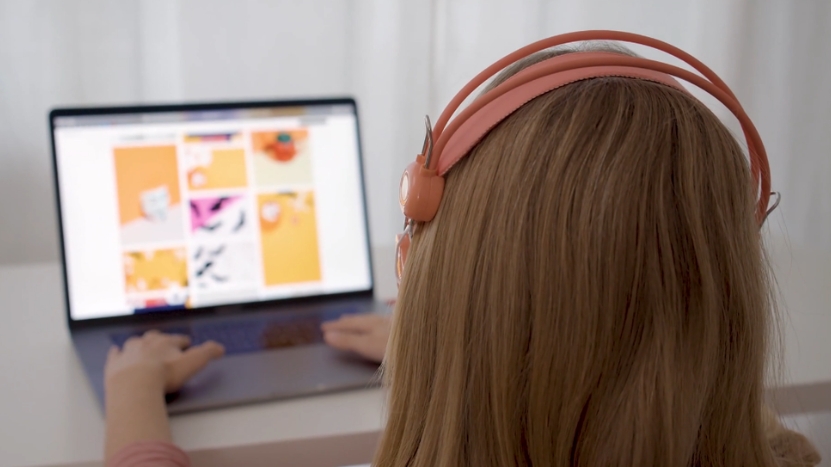
Share Post:
Multimodal learning is a teaching approach that incorporates multiple modes of communication and styles, such as visual, auditory, reading/writing, and kinesthetic methods.
In today’s educational landscape, this approach has become vital for creating more engaging, inclusive, and effective experiences for students of all ages.
Table of Contents
ToggleShowing the Ropes
Multimodal learning is a concept that integrates various modes of teaching to engage learners more deeply. The primary modes are visual, auditory, reading/writing, and kinesthetic.
These four styles are widely recognized under the VARK model, which stands for:
- Visual
- Auditory
- Reading/Writing
- Kinesthetic
Visual learners thrive on information presented through images, charts, and diagrams. These students can quickly process and understand complex information when it’s presented graphically.
Auditory learners are those who learn best by listening. They absorb information effectively through spoken words, such as lectures, podcasts, or group discussions.
Reading/Writing learners excel when they can read text and write notes. This mode includes traditional methods like textbooks, essays, and note-taking to aid information processing.
Kinesthetic learners are hands-on learners. They prefer to engage physically with materials, often excelling in tasks that require movement, experimentation, or touch.
Benefits of Multimodal Learning in Education
Multimodal learning offers a variety of benefits that significantly enhance both engagement and comprehension.
Increased Student Engagement
Multimodal learning significantly enhances student engagement by catering to a variety of learning styles.
In any classroom, students have diverse preferences for how they absorb and process information.
ome may respond well to visual aids like diagrams or videos, while others may prefer listening to explanations or actively engaging in hands-on activities.
Improved Retention
Another major benefit of multimodal learning is its positive impact on memory retention.
Studies have shown that when learners use multiple senses simultaneously, they are more likely to remember and retain the information being presented.
For example, when students are exposed to a concept through a combination of reading, listening, and visual aids, the material is reinforced in their memory through different cognitive pathways.
Inclusive Environments
Multimodal learning promotes inclusivity by addressing the needs of students with different learning preferences.
Traditional teaching methods, such as lectures or textbook-based lessons, may work well for some students but can marginalize those who learn differently.
Visual learners, auditory learners, and kinesthetic learners may all struggle to excel in a one-size-fits-all classroom.
Multimodal approaches, on the other hand, offer multiple ways for students to engage with the material, ensuring that no student is left behind.
Application in Different Environments
Multimodal learning can be applied across a wide range of learning environments, from schools to corporate training.
In corporate training, multimodal learning is often used to onboard new employees.
For instance, sales representatives might go through a mix of:
- Reading documents
- Attending webinars
- Watching video demos
- Participating in feedback sessions
This approach helps employees understand both theoretical and practical aspects of their roles, making them more job-ready from the start.
A company like Learn Upon uses multimodal training to enhance the workplace readiness of its employees, blending traditional learning methods with experiential activities.
In engineering education, where practical problem-solving skills are critical, multimodal learning proves especially effective. For example, platforms combine:
- Video Lessons
- Interactive digital exercises
- Real-world projects
In K-12 classrooms, multimodal learning is rapidly becoming the norm.
Strategies to Implement Multimodal Learning
Adding multimodal learning strategies into educational environments can significantly enhance teaching outcomes.
One of the most effective strategies is combining multimedia, which involves using videos, audio recordings, slideshows, infographics, and interactive content to engage different types of learners.
Multimedia helps break the monotony of one-dimensional lessons, offering students varied ways to absorb and process information.
Blended learning is another key approach, combining in-person teaching with digital content.
In a blended learning setup, students might participate in face-to-face lectures while also completing online quizzes, watching tutorial videos, or engaging with digital simulations.
To fully implement a multimodal approach, educators can also introduce multimodal assessments, encouraging students to demonstrate their understanding using different media formats.
Instead of traditional exams, students could create:
- Video presentations
- Write essays
- Participate in hands-on projects
Feedback delivered through different media can enhance the process. Teachers can provide audio or video feedback instead of written comments, offering a more personal and engaging way for students to understand their strengths and areas for improvement.
Challenges and Considerations
Despite its many benefits, multimodal learning presents some challenges. One of the most significant issues is overcoming limitations in resources.
Not all schools or educational institutions have access to the latest technology or enough support to add multiple learning modes effectively.
Limited technological infrastructure can hinder the successful implementation of multimodal strategies, particularly in underfunded or rural areas.
Tailoring content to fit specific learning objectives is another challenge.
While multimodal learning can benefit diverse learners, it requires careful planning to ensure the methods align with the goals of the lesson.
Teachers must strike a balance between offering variety and maintaining focus on the core content.
Educators may need to adjust teaching methods to suit different environments.
For example, the strategies that work in a digital classroom may not translate seamlessly to traditional settings.
Therefore, careful consideration of the learning context is essential for the successful application of multimodal teaching approaches.
In Conclusion
Multimodal learning plays a crucial role in enhancing modern education.
This approach leads to better retention and more inclusive learning environments.
The ability to integrate multiple modes not only enriches the learning process but also prepares students for long-term success in their educational and professional pursuits.
Related Posts:
- What Does 'Level of Education' Mean? An In-Depth Look
- What is Bloom’s Taxonomy and How Does It Apply to Teaching?
- 9 Ways Remote Learning Is Changing Healthcare Education
- Drive Better Learning Outcomes With These 4…
- Is Online Learning as Effective as Traditional Education?
- Why Social-Emotional Learning Matters in Modern Education












